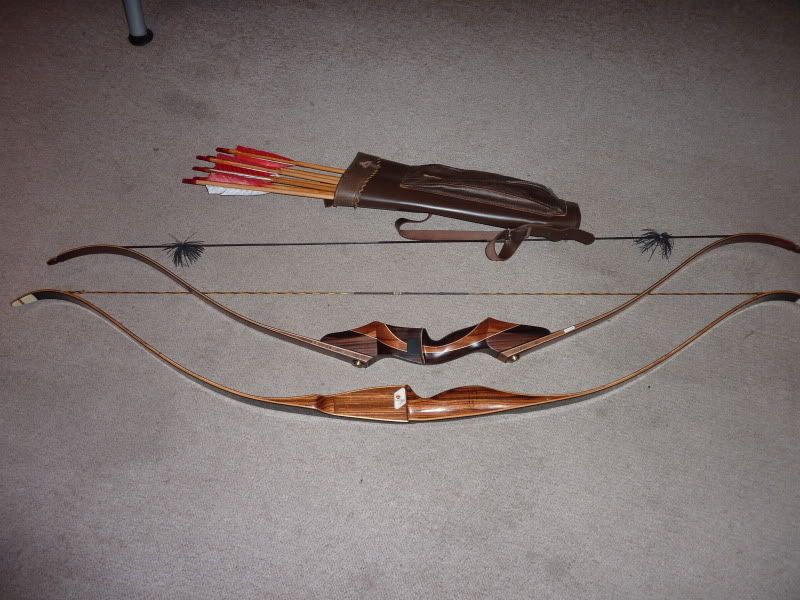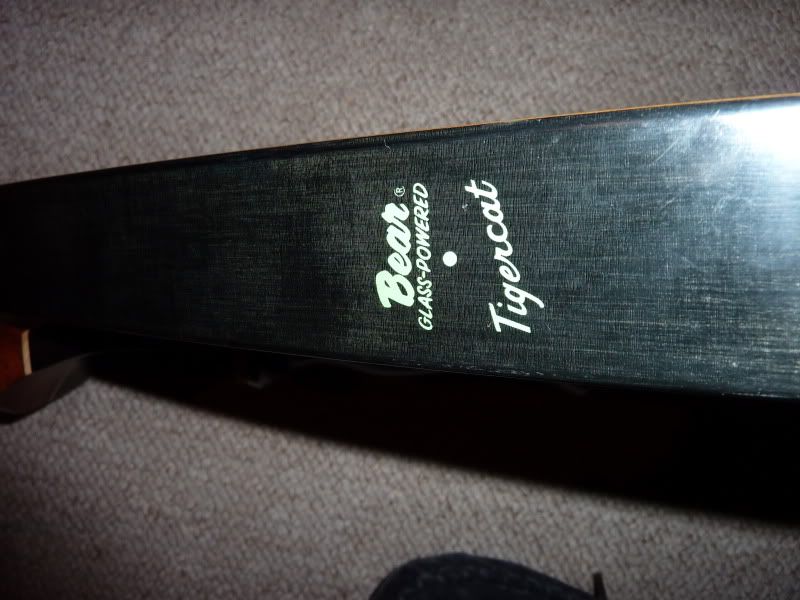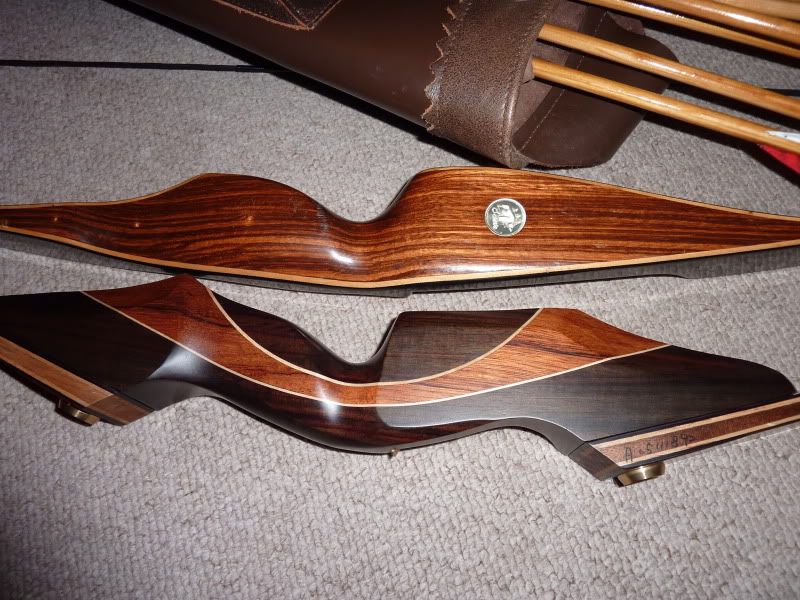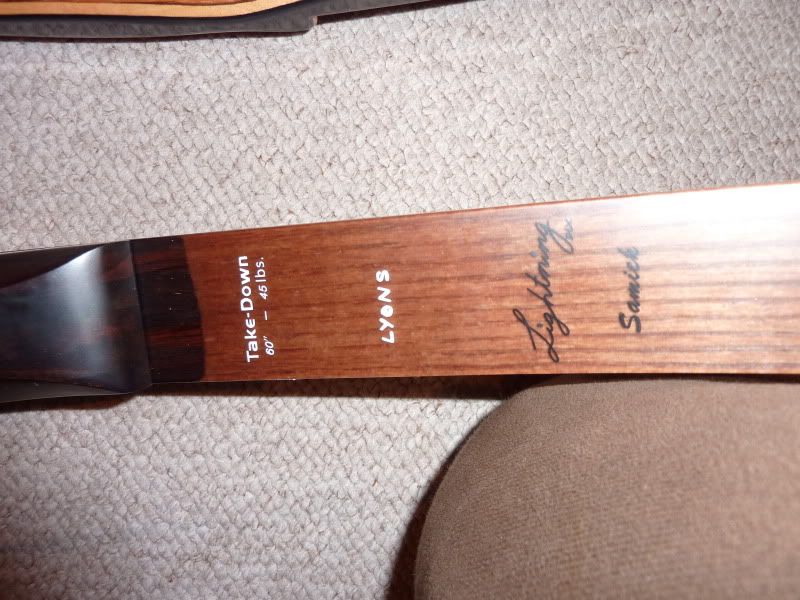Field/Hunting Recurve Bows
1968 Bear Tigercat vs 2009 Samick Lightning
Many bushcrafters enjoy archery. Most seem to prefer the ‘field archery’ style – typically using shorter bows than pure target archery, without sights, at relatively short distances. Interesting, where bowhunting is legal, quarry is usually taken at less than 30 yards.
Buying a field/hunting bow can be a challenge. If you are seriously rich, buy either a Black Widow (made in the USA) or a Border Black Douglas (made in Scotland) and you will never regret either purchase.
But if you don’t have that sort of money, the decision is more complex. The American bowhunters used recurves until the compound bow took over in the 1970s. In the USA, you can still buy these classic recurve bows from the 60s and 70s by makers such as Browning, Bear, Pearson, Root and Shakespeare. Often they had risers of exotic hardwood, and maple/fibreglass limbs. They are readily available on international ebay, and a few years back I bought a Bear Tigercat this way for about £70 delivered. Nowadays, the exchange rate, customs attention and increased shipping costs makes this option less attractive. In addition, many of these bows – especially Bears and Brownings – have acquired collector interest, and prices have gone up.
You could get a Custom recurve made but this will cost £300 up. Or you could buy a Chinese-made Samick field bow.
Samick is a Korean company which makes high class Olympic bows. Their field bows are low-priced – the Lightning reviewed here is around £125.

Samick Lightning (top)
Bear Tigercat from 1969 (bottom)

Bear Tigercat
The serial number indicates it was made in 1968. The riser is African Zebrawood, limbs are maple and black glass. It incorporates Bears 1953 patented static recurve.
It looks good and shoots well. The glass shows stress lines, but I reckon it’s good for at least another 40 years.
The wood is inset with a medallion – apparently Fred Bear thought this added a touch of class.
These old American bows are remarkably good, and at 45lb draw, it is deer-legal across north America. There is no evidence of stacking at my 28.5” draw. It is 62” long – shorter than a target bow, though quite long for a field/hunting bow.

Samick Lightning

The Lightning is one of Samick’s more recent, higher-range recurves. There are reports on the internet of riser failure or delamination of the the limbs – however, these are likely to occur soon after purchase, and the warranty is good, so I was not too concerned.
It looks good – laminated contrasting woods, and the limbs are wood and clear glass, which IMHO looks better than the black glass of the Bear. It is more heavily recurved, and the riser is more deflexed. This example is 45lb at 28”. It does not stack at my draw of 28.5”. It’s 60” long.
It came with an Allen key to assemble, but no bowstring or rest. I fitted a Dacron string, hair rest and string silencers. There is a USA bowhunting firm that does a cheap package deal on string, nocking rings and silencers.
Shooting off the shelf, it’s a tad faster and quieter than the Bear, as you would expect from the design. The design looks better, though it doesn’t have the Tigercat’s exotic wood and forty years of ‘mojo’.
Accuracy depends more on arrows and archer than the bow – but I reckon the Samick has a slight edge – quite impressive given that it is shorter, as longer bows tend to be more stable.
The Samick is very fine value. However, if you are new to archery, it’s best to learn on a low-draw weight bow, preferably at a club, to develop good ‘form’ (posture and technique). Having said that, in the US, many people learn using a 45lb hunting bow like the two reviewed here.
1968 Bear Tigercat vs 2009 Samick Lightning
Many bushcrafters enjoy archery. Most seem to prefer the ‘field archery’ style – typically using shorter bows than pure target archery, without sights, at relatively short distances. Interesting, where bowhunting is legal, quarry is usually taken at less than 30 yards.
Buying a field/hunting bow can be a challenge. If you are seriously rich, buy either a Black Widow (made in the USA) or a Border Black Douglas (made in Scotland) and you will never regret either purchase.
But if you don’t have that sort of money, the decision is more complex. The American bowhunters used recurves until the compound bow took over in the 1970s. In the USA, you can still buy these classic recurve bows from the 60s and 70s by makers such as Browning, Bear, Pearson, Root and Shakespeare. Often they had risers of exotic hardwood, and maple/fibreglass limbs. They are readily available on international ebay, and a few years back I bought a Bear Tigercat this way for about £70 delivered. Nowadays, the exchange rate, customs attention and increased shipping costs makes this option less attractive. In addition, many of these bows – especially Bears and Brownings – have acquired collector interest, and prices have gone up.
You could get a Custom recurve made but this will cost £300 up. Or you could buy a Chinese-made Samick field bow.
Samick is a Korean company which makes high class Olympic bows. Their field bows are low-priced – the Lightning reviewed here is around £125.

Samick Lightning (top)
Bear Tigercat from 1969 (bottom)

Bear Tigercat
The serial number indicates it was made in 1968. The riser is African Zebrawood, limbs are maple and black glass. It incorporates Bears 1953 patented static recurve.
It looks good and shoots well. The glass shows stress lines, but I reckon it’s good for at least another 40 years.
The wood is inset with a medallion – apparently Fred Bear thought this added a touch of class.
These old American bows are remarkably good, and at 45lb draw, it is deer-legal across north America. There is no evidence of stacking at my 28.5” draw. It is 62” long – shorter than a target bow, though quite long for a field/hunting bow.

Samick Lightning

The Lightning is one of Samick’s more recent, higher-range recurves. There are reports on the internet of riser failure or delamination of the the limbs – however, these are likely to occur soon after purchase, and the warranty is good, so I was not too concerned.
It looks good – laminated contrasting woods, and the limbs are wood and clear glass, which IMHO looks better than the black glass of the Bear. It is more heavily recurved, and the riser is more deflexed. This example is 45lb at 28”. It does not stack at my draw of 28.5”. It’s 60” long.
It came with an Allen key to assemble, but no bowstring or rest. I fitted a Dacron string, hair rest and string silencers. There is a USA bowhunting firm that does a cheap package deal on string, nocking rings and silencers.
Shooting off the shelf, it’s a tad faster and quieter than the Bear, as you would expect from the design. The design looks better, though it doesn’t have the Tigercat’s exotic wood and forty years of ‘mojo’.
Accuracy depends more on arrows and archer than the bow – but I reckon the Samick has a slight edge – quite impressive given that it is shorter, as longer bows tend to be more stable.
The Samick is very fine value. However, if you are new to archery, it’s best to learn on a low-draw weight bow, preferably at a club, to develop good ‘form’ (posture and technique). Having said that, in the US, many people learn using a 45lb hunting bow like the two reviewed here.
Last edited:

